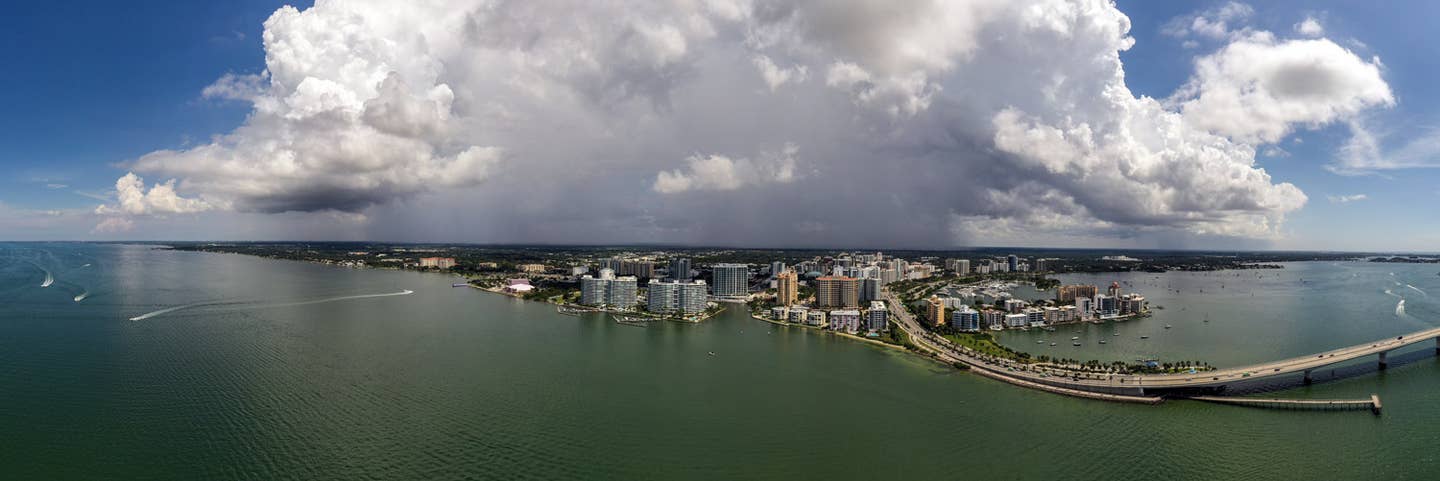Plane Facts: Thunderstorms
Frightening facts about these giant, deadly storms.

The way the Lower 48 United States are situated geographically and climatically, we get a lot of severe weather. From hurricanes lined up and rolling in from the Atlantic and Caribbean, to the twisters of Tornado Alley, right down to the severe thunderstorms marching southwest to northeast and wreaking havoc along the way, America has arguably the most diverse severe weather on the planet. While tornados and hurricanes do huge amounts of damage, in terms of sheer numbers, thunderstorms are the most destructive weather events. For pilots, well, we can see hurricanes forming a thousand miles away, and storms big enough to form tornados give ample warning, and we stay well away from them. Thunderstorms can be forecasted, but they can also pop up with little or no warning and can build to 50,000 behemoths in a matter of hours. And because they often form in lines, they are hard, if not impossible, to safely get through or around,.
Average yearly cost of severe TS damage, U.S.: $10 billion
Number of TS worldwide/year: 16 million
Average number of TS in progress at any given time, worldwide: 2,000
Number of TS U.S./year: ~100,000
Most likely time of year: Spring/Summer
Most likely time of day, Gulf Coast, Southeastern and Western States: Afternoon
Most likely time of day, Plains States: Late afternoon/Night
State with most days with thunderstorms: Florida
Average TS cell diameter: 15 miles
Average duration: 30 minutes
Average TS max wind speed: 34-40 mph
Average TS tops: 40,000 feet
Max recorded TS top: 75,000 feet
Associated aviation dangers: Lightning, turbulence, wind shear, downbursts, icing, hail, engine water ingestion, reduced visibility
Severe storm qualifications: Hail 1"+ diameter, winds 58 mph+ (50 kts), tornadic activity
Percentage of storms that classify as severe: 10%
Lightning temp: Up to 30,000°C (54,032°F)
Temperature of the Sun: 5,778K (5,505°C)
Lightning speed, leader: ~136,000 mph
Length of leader steps: ~150 feet
Lightning speed, return stroke (visible flash): ~62,000,000 mph
Estimated peak power, single stroke: 1,000,000,000,000 watts
Lightning fatalities, U.S., 2016: 38, 76% male
Lightning fatalities, U.S., 2006-2016: 352, 79% male
Average frequency of lightning striking an aircraft: Once every 1,000 flight hours
Most common altitudes at which lightning strikes occur: 8,000-14,000 feet
Types of lightning damage to aircraft: Puncturing fuselage, burning, melting, or distorting aircraft parts, temporary or permanent damage to avionics, fire in the fuel system
Number of U.S. aviation accidents/incidents in which lightning was a contributing factor since 1962: 62
Microburst-related danger: Extreme wind shear, powerful up/downdrafts
Microburst Causes: Mid-level dry air entrainment (mixing of environmental air into cloud causing cooling and sinking), cooling beneath the thunderstorm cloud base, sublimation, rain and/or hail within the thunderstorm (precipitation drag)
Microburst downdraft: Up to 6,000 fpm
Microburst max speed: 150+ mph
Microburst size: 2.5 miles diameter or smaller
Average duration, microburst: 5 minutes
Microburst location: Under storm
Macroburst: Microburst-type downdraft larger than 2.5 miles in diameter, can cause straight line winds resulting in tornado-like damage
Macroburst, max wind speed: 130+ mph
Macroburst, max distance: Up to 250 miles from center of downburst
TS-induced turbulence, range: Up to 20 miles laterally from storm
TS turbulence, location: In clouds or clear air
Location of strongest turbulence: In clouds between updraft and downdraft
Supercooled water droplets, most common location: In CB, 0 to -15°C
Associated hazard: Icing, rime and clear
Hail, max speed: 100+ mph
Hail, size: 95% is less than 1.75" diameter
Most common area for hail, U.S.: Western Great Plains
Most common occurrence: May-June
Largest recorded hailstone: 7.9" diameter, 18.62" circumference, Vivian, South Dakota, July 23, 2010
Weight of largest hailstone: 1.94 lbs
Want more Plane Facts?

Subscribe to Our Newsletter
Get the latest Plane & Pilot Magazine stories delivered directly to your inbox






